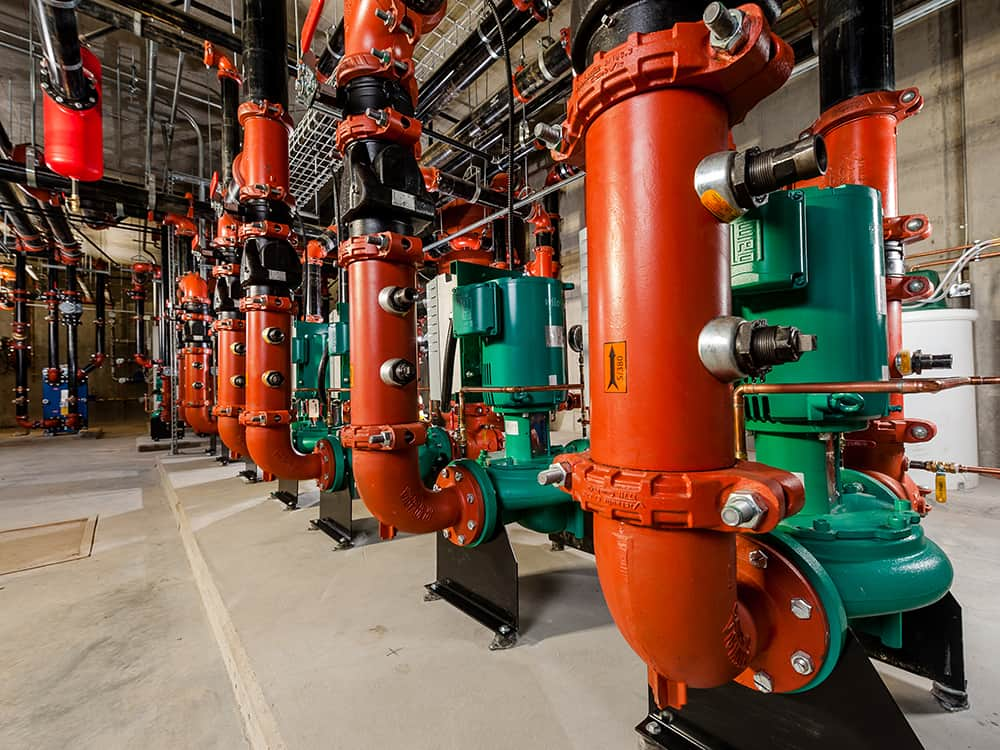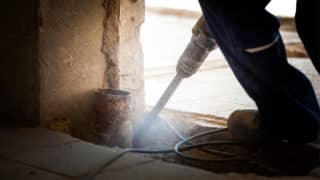Posted on October 21, 2019
The flange alignment procedure is far more critical than assembling grooved pipe joints
The flange alignment procedure is made up of three monotonous, but necessary, steps
- Fabrication of the flange to pipe
- Alignment of bolt-holes
- Squared flange faces
Flanged Pipe Joints Take Time to Install
During installation of a flange, the bolt-holes must be precisely aligned, and the mating flange faces must be square. The bolt-hole index on equipment inlets and outlets must line up perfectly with the flange on the piping to be connected to the unit. As prefabrication of piping becomes more prevalent, flange orientation becomes more critical as improper flange orientation creates a range of misalignment issues requiring timely field rework. Also, only after the flange bolt-holes and mating faces are aligned, can the numerous bolts and nuts be installed and tightened in a specific star pattern to the required torque to secure the joint. Installation of flanging systems is exponentially longer than grooved systems because of the precise alignment necessary, multiple bolts and nuts, and welding a 100 percent rigid system. Did you know it only takes 40 seconds to roll groove a 6-inch piece of pipe?
Flange alignment issues become more difficult as the pipe size increases. Also, flanges are roughly twice the width of the pipe, making them difficult to install in areas with limited space, especially when some of the bolts and nuts might be difficult to reach and tighten. For example, the outside diameter (OD) of a 12-inch pipe is 12.75-inches and the OD of the same size coupling is 15-inches. Because of the grooved pipe coupling’s 360-degree orientation capability coupled with a smaller profile, it makes them ideal for jobs like mechanical rooms, where space is limited.
What Do I Use in the Place of a Flange Alignment Procedure? Grooved Pipe Couplings and Fittings
Because grooved pipe couplings have fewer bolts (and for some manufacturers, no torque requirements) grooved pipe joining is up to six times faster to install than flanged pipe joints and it can be done with simple hand tools. At Victaulic, grooved pipe couplings require only two bolts for sizes up through 24-inch; for sizes 26- to 60-inches only four bolts. For comparison, a 12-inch flange uses 12 nuts and bolts. For some manufacturers, visually inspecting if the pipe coupling is properly installed can be done solely by confirming if the bolt pads of the coupling housings meet metal-to-metal.
Piping systems installed with grooved pipe couplings and fittings don’t have the alignment issues flanged joints do. There is no bolt-hole pattern to line up, and a grooved pipe coupling can be oriented at any position around the pipe in the field to provide easy access to the bolts, and in turn, simplify the assembly procedure. Unlike flanged joints, the bolts and nuts in a grooved coupling are perpendicular to the primary system loads so they only hold the housing segments together. The coupling housing also encompasses the resilient elastomer gasket which maintains a leak tight seal during pressure and temperature cycling for the life of the system, without requiring any maintenance.
Real Life Example
To flange a six-inch joint on Schedule 40 Carbon Steel pipe requires eight bolts and would take approximately one-and-a-half man hours to complete. This could be completed in just 20 minutes using a grooved solution. Or around ten minutes using a Victaulic Installation-Ready™ coupling, since these do not require disassembly prior to installation. Both grooved solutions require only two nuts and bolts.
These time savings continue to increase with larger diameter piping systems. A 36-inch flange joint on standard wall 3/8-inch carbon steel pipe would require 32 nuts and bolts and around ten man-hours to complete. A grooved coupling at this size would only require four nuts and bolts and take around two hours. For these reasons, grooved pipe couplings are the best method for joining pipe when construction schedules are tight.
Check out our other post in this two-part series, Why Not to Use Flanged Pipe Joints, to learn why grooved pipe couplings are the best method for joining pipe When You Are Worried About Downtime.



